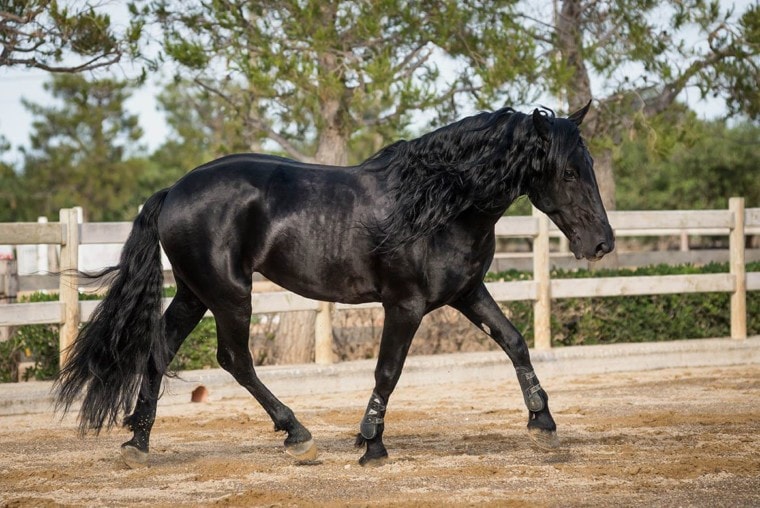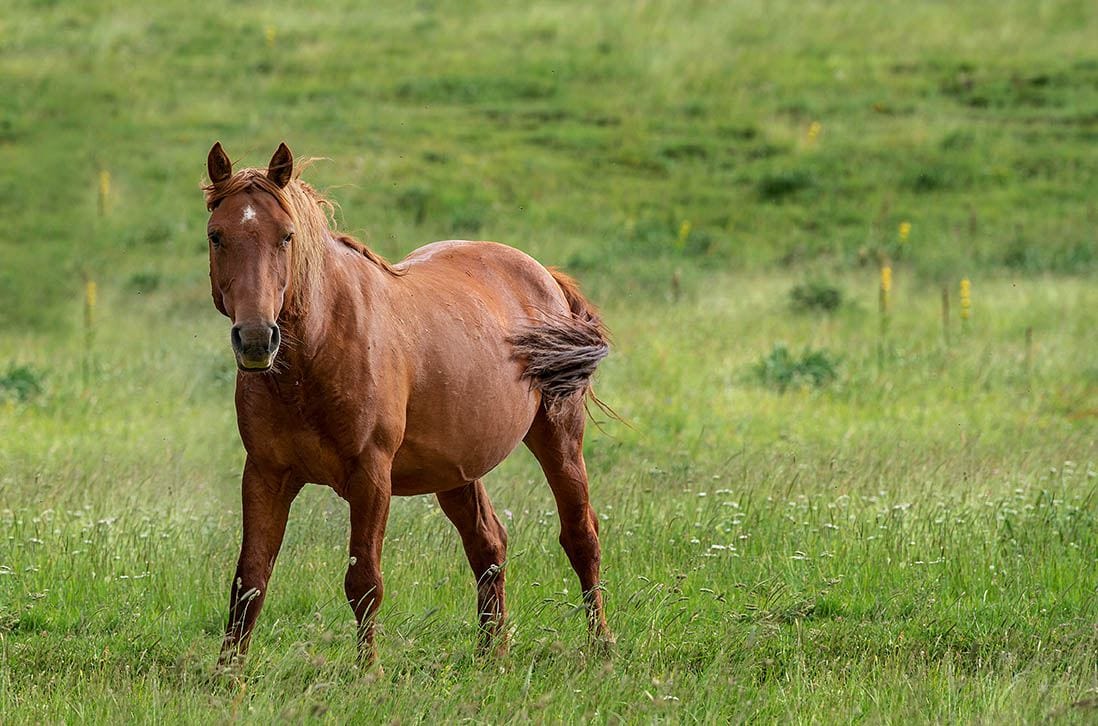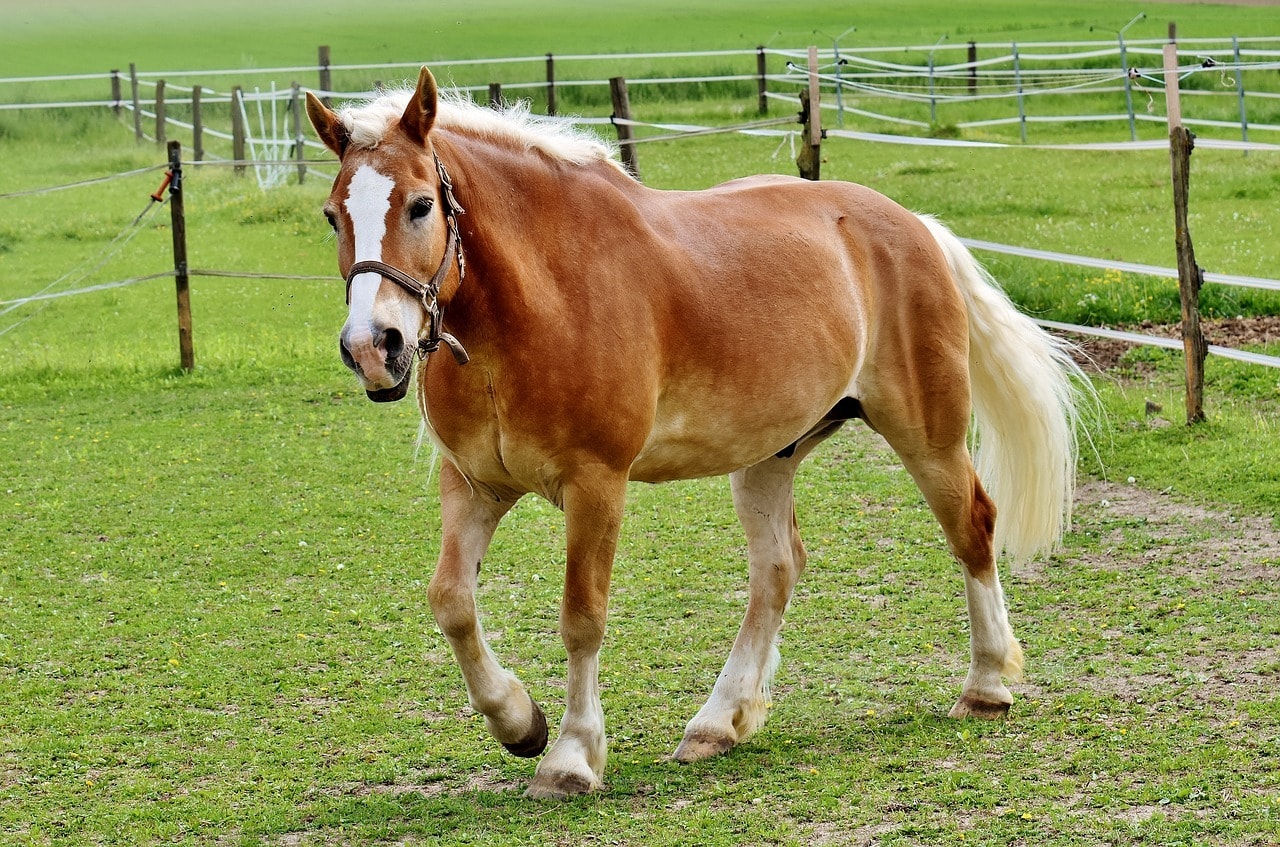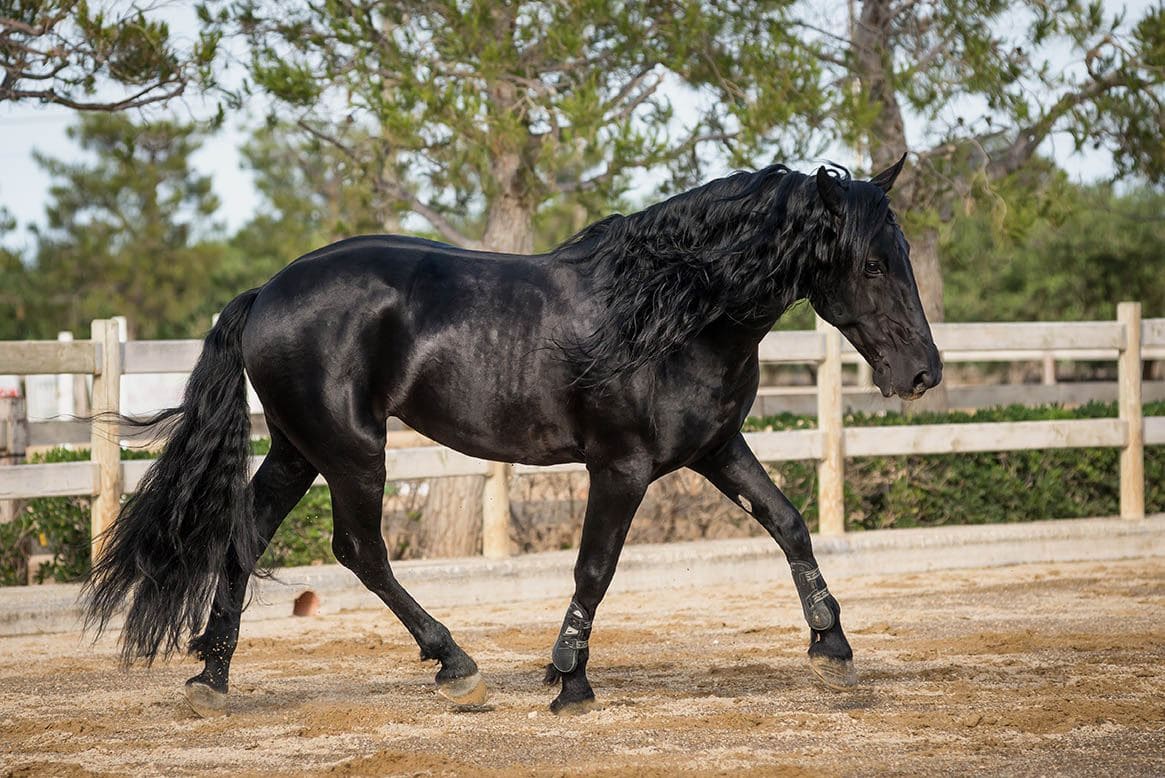
When you think about Italy, you probably imagine the beautiful countryside, the ancient and glorious architecture, and of course, the incredible food, wine, and music. However, for all of the amazing contributions that Italians have brought to the world, we rarely think about their horses.
So, we’re here to rectify this by presenting 15 beautiful horse breeds that originated in Italy.
The 15 Italian Horse Breeds:
1. Bardigiano

The Bardigiano horse comes from the Emilia-Romagna region of Italy and gets its name from the small town of Bardi. The area is mountainous and rocky, which contributed to the hardy and agile Bardigiano. They are commonly used for mountain trekking, show, pleasure, and as therapy horses.
The Bardigiano is a small horse that stands between 13.2 to 14.1 hands and can be found in a number of colors, such as chestnut or light bay, but are generally only recognized in a dark bay color. They are docile, calm, and quiet horses that can work well as a child’s horse.
2. Calabrese

The Calabrese horse got its name from the Calabria region of Italy from where it came and has its origins back to before the founding of Rome. They are currently a cross of the Andalusian, Thoroughbred, and Arabian breeds and are used for pleasure, sport, and riding.
The Calabrese horse’s average height is 16 to 16.2 hands and is commonly gray, bay, black, or chestnut. They are very friendly and willing horses that can be spirited, energetic, and strong.
3. Catria
These horses come from the Monte Catria mountain in the Marche region of Italy and were developed from the Maremmano breed (which you will see later in this article) crossed with the Freiberger (from Switzerland). The Catria is used for sport, agriculture, and as a saddle horse.
They are smaller horses at 14.2 to 14.3 hands and are traditionally gray, roan, bay, or black in color. The Catria is a calm, strong, hardworking, and serious horse that works well in mountain agriculture.
4. Cavallo Romano Della Maremma Laziale

Well, isn’t this horse’s name a mouthful (especially for those of us not well-versed in Italian)? Cavallo Romano Della Maremma Laziale actually translates into “Roman horse of the part of the Maremma that is in Lazio”, which tells us exactly where this horse comes from. While they are an ancient breed of horse, they have only been recognized since 2010 and are most commonly used as a working horse for livestock.
The Cavallo Romano Della Maremma Laziale stands at 14.3 to 16.1 hands and can be gray, chestnut, black, or bay. They are sure-footed, docile, yet brave horses and can be quite spirited and lively.
5. Esperia Pony

Another Italian breed named for the region from which it originated, the Esperia pony, is a combination of wild horses from the region and Turkish breeds. They are used in competitions, as show ponies, and also pack horses.
The Esperia averages 13 to 14 hands in height and is typically black in color. These ponies are a hardy breed as they can withstand extreme temperatures and go without water for several days. They are willing, calm, and docile ponies that can be very steady and attentive.
6. Giara

The Giara horse is a breed that hails from the island of Sardinia but is a wild animal that was not purposely mated with other breeds, unlike most of the horses on this list. They have been around since at least 6,000 B.C. and have been isolated from breeding for most of this time.
They are small horses at 11.3 to 12.2 hands and are commonly black, bay, or chestnut in color. The Giara can be used for riding, and they tend to be restless, robust, hardy, and strong in character.
7. Haflinger

Many of the horses on this list are relatively rare, but the Haflinger, also known as the Avelignese, is not one of those. These horses are quite popular and were developed in Northern Italy as well as Austria in the late 19th century. They originally were employed as packhorses but are currently used for everything from show, draft, trekking, dressage, therapy, and the list goes on.
The Haflinger is 13.2 to 15 hands and comes in a number of colors but is typically chestnut with a white or pale mane and tail. These horses are known for their gentle and friendly natures, but they can also be hard-headed and stubborn and might test their rider’s patience.
8. Italian Trotter
These horses had their origins in the 1800s when trotting races were gaining popularity around the world. A combination of English Thoroughbreds, as well as American, Norman, and Russian Trotters, are what makes up the Italian Trotter. They are used today for racing and riding.
These powerful horses stand up to 17 hands and come in almost all colors but are most commonly chestnut, bay, or black. They are spirited and nervous horses, but Italian Trotters are a noble and willing breed that makes some of the best trotters worldwide.
9. Maremmano

No one truly seems to know the origins of the Maremmano horses, but it is believed that they descended from the horses of North Africa, specifically the Barb. There has been the addition of Arabian and Thoroughbred added to the bloodline. The Maremmano horse is used for endurance, sport, and riding.
The Maremmano stands at 15 to 16 hands and is commonly grey, bay, or chestnut. They are obedient and docile horses that are loyal, intelligent, and friendly.
10. Monterufoli Pony
The Monterufoli hails from the Province of Pisa, which is a part of the Tuscany region and is a combination of some Asian, the Tolfeta, and the Maremmano horse breeds. They have been used for riding and harness and are quite rare today.
The Monterufoli is 13.2 to 14 hands and is usually dark bay in color and occasionally has white markings, such as stars and blazes. They are loyal and calm ponies that can be quite willing and docile.
11. Murgese

The Murgese, also called Murge, is believed to have been developed through the mating of the horses common in the Murge region of Italy with Barb and Arabian horses. They are used for a variety of activities, including riding, show, carriage, and equestrian sport.
The Murgese is about 15 to 16 hands and is usually found in grey and black. They are obedient, friendly, willing, and lively horses that are rare today.
12. Pentro
The Pentri were a tribe of the Samnites, ancient people from south-central Italy. This is where the Pentro horse received its name, which has been used for riding and as a working horse.
The Pentro is a small horse standing at 13 to 14 hands and is grey, black, bay, or chestnut in color. This breed is friendly, obedient, intelligent, and easy to train but can be nervous as well. The Pentro is close to extinction.
13. Sardinian Anglo-Arab

These horses are also known as Anglo-Arabo-Sardo and originated on the Italian island of Sardinia. These horses are a mix of native wild horses with Arabian and Thoroughbred breeds and are used for trekking, riding, and for show.
They are 15 to 16.1 hands and are typically sorrel, gray, or bay in color. The Anglo-Arabs are intelligent but stubborn horses that are prone to the Arabian’s fiery temper. They are fast and athletic horses that are durable and smart.
14. Tolfetano

The Tolfetano horse hails from the mountain town of Tolfa, which is a part of the greater city of Rome. These horses are thought to have Berber as a part of their bloodline and have been used in the military as well as for riding, pack, and cow horses.
The Tolfetano is about 14.3 to 16 hands and is traditionally bay or chestnut in color. They are independent and hardy horses that are intelligent, gentle, calm, and easy-going. They are yet another Italian breed that is quite rare.
15. Ventasso

Lastly, we have the Ventasso horse, which comes from the Ventasso Mountain region of Val d’Enza in Italy. Known for its endurance, the Ventasso was popular with soldiers from the Italian army and is currently used as a saddle horse. They are a combination of the Maremmano and the famous Spanish Lipizzan breeds.
The Ventasso is 14.3 to 16.1 hands and is grey, black, bay, or chestnut in color. These are rare horses that are courageous and energetic and with a balanced temperament.
Final Thoughts
Hopefully, you’ve enjoyed getting to know (briefly) some of the horses of Italy. These horse breeds are all beautiful and unique, just like the country they come from. One thing that many of these horses have in common is their rarity. Many of these horses either have been or are on the verge of extinction, which would be a terrible loss for Italy and the entire world.
Featured Image Credit: Nicole Ciscato, Shutterstock









